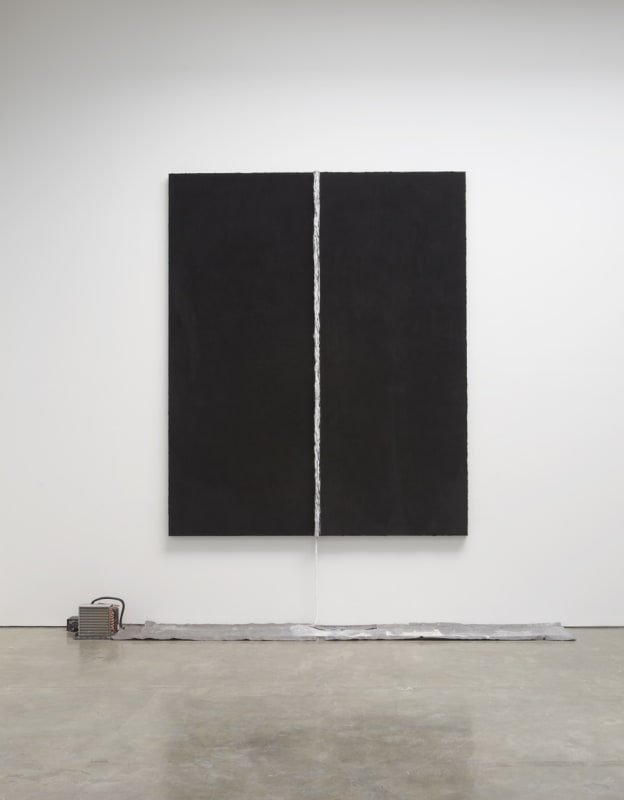BY RICHARD KALINA
Pier Paolo Calzolari's first solo show in New York since 1988, titled When the dreamer dies, what happens to the dream?, displayed works ranging from 1967 to 2012 in the temporarily conjoined Marianne Bosky and Pace Gallery spaces in Chelsea. Calzolari, an early member of the Arte Povera group, continues to operate in that movement's classic mode, infusing mundane substances with poetic presence. His works, some freestanding and some wall-hung, employ a variety of materials, either singly or in combination: corroded lead, burnt wood, scorched felt, moss, tobacco, oyster shells, a bathtub, a live white koi fish.
Calzolari, like many of his Post-Minimal colleagues, seems to have no preferred or fixed format. An untitled piece from 1971–an elegant arcing diagonal of blue neon, interspersed with three burning oil lamps–feels loose and almost cursive. Yet an untitled 1988 work–a tall rectangle of black burnt salt bisected by a thin, vertical line of embedded lead strips frostily whitened by a humming refrigeration unit–evokes Barnett Newman's reductive spiritual geometry. Sometimes Calzolari employs text: the show's title sentence, for example, inscribed in reverse on a field of hardened salt. At other times, performance comes into play. Colibri (2002), an interactive video projection, features a reclining female nude with a hummingbird fluttering in the upper right portion of the screen. The woman recites a poem in a very soft voice, and when the viewer leans closer to listen, she sits up and tries to grab the hummingbird, misses and slowly lies back down.
Calzolari's diverse production is held together by a series of recurring motifs. We see many variations on whiteness, frost, luminosity and corrosion. Even though the artist takes his materials from the quotidian world, there is little sense of popular culture with its jazz and jostle, no overtly political or social themes. Calzolari's objects, exuding stillness and quiet, seem laced with an appreciation of the ephemeral. They are pensive rather than conceptual, their formal boldness tempered by an undercurrent of melancholy. Calzolari, while not as known in the United States as many of his compatriots, is one of Arte Povera's most talented and inventive practitioners. This exhibition gave us a chance to catch up with a first-rate artist.


